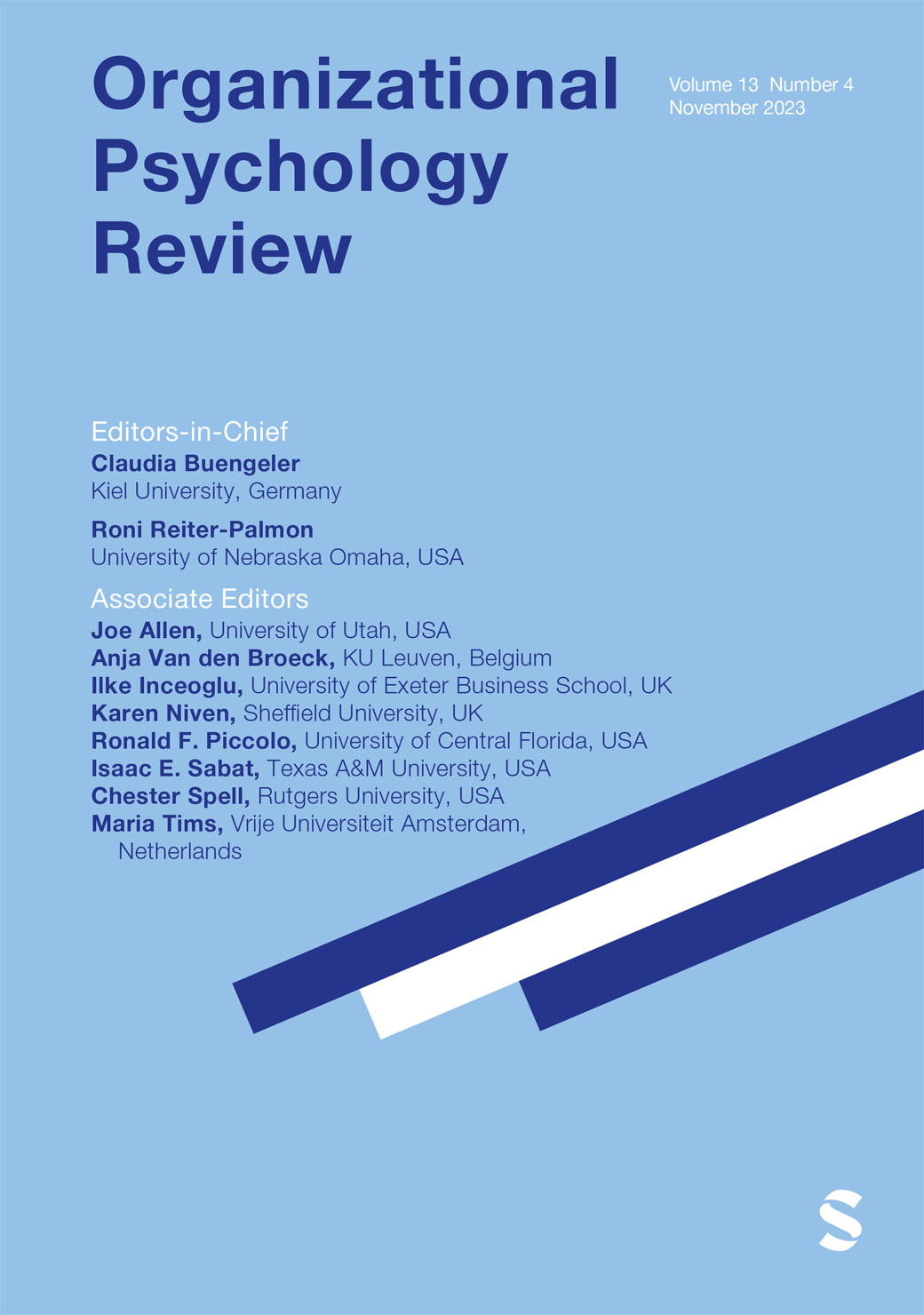The dynamic threshold model of bandwagon innovations: Role of organizational attention and legitimacy
IF 7.1
1区 心理学
Q2 MANAGEMENT
引用次数: 1
Abstract
Innovations are not always adopted due to their expected economic impact but often due to bandwagon pressure. Fueled by economic uncertainty, these “bandwagon innovations” are adopted once the bandwagon pressure reaches a certain threshold. Existing literature, however, has not examined this threshold’s sources nor considered the effect of a bandwagon adoption decision on threshold. Therefore, building on current knowledge about the bandwagon effect, organizational attention, and legitimacy, this paper develops a theoretical model to help understand the factors affecting threshold and making organizations more or less likely to adopt bandwagon innovations. The novel dynamic threshold model proposed here explains how attention to social or economic factors can affect an organization’s threshold. The model shows that the threshold may change such that an organization may be more likely to adopt a bandwagon innovation after prior resistance or resist one after prior adoption. Implications for organizational decision-makers and future research avenues are also discussed. Plain Language Summary The paper proposes a dynamic threshold model of bandwagon innovations, which illuminates the outcomes of the decision involving bandwagon innovations. If the bandwagon pressure does not exceed the threshold level (or the propensity to adopt a bandwagon innovation), then the organization resists the bandwagon, which increases legitimacy concerns. On the other hand, if the bandwagon pressure exceeds the threshold level, the organization adopts the bandwagon innovation. The primary determinant of this threshold is attention. Attention can be of two types; attention to social factors, which decreases the threshold level, and attention to economic factors, which increases the threshold level. The allocation of attention to the two factors varies based on the outcomes of the bandwagon innovation decision. The increased legitimacy concerns (in case of resisting a bandwagon innovation) lead the organization to allocate more attention to the social factors, thereby reducing the threshold level for the subsequent bandwagon innovation. In case of adopting a bandwagon innovation, the legitimacy concerns are reduced, and the organization's attention is redirected to assimilating the innovation and justifying the adoption costs, which makes the economic factors of any subsequent bandwagon innovation more salient and increases the threshold level until the current innovation is assimilated.从众创新的动态阈值模型:组织关注和合法性的作用
创新并不总是因为预期的经济影响而被采用,而往往是由于潮流压力。在经济不确定性的推动下,一旦从众压力达到一定阈值,这些“从众创新”就会被采用。然而,现有的文献并没有研究这个阈值的来源,也没有考虑从众决策对阈值的影响。因此,基于当前关于从众效应、组织关注和合法性的知识,本文开发了一个理论模型,以帮助理解影响阈值的因素,并使组织更或更不可能采用从众创新。本文提出的新的动态阈值模型解释了对社会或经济因素的关注如何影响组织的阈值。该模型表明,阈值可能会发生变化,这样一个组织可能更有可能在先前的抵制之后采用一种潮流创新,或者在先前的采用之后抵制一种创新。对组织决策者的启示和未来的研究途径也进行了讨论。本文提出了从众创新的动态阈值模型,该模型描述了涉及从众创新的决策结果。如果从众压力没有超过阈值水平(或者采用从众创新的倾向),那么组织抵制从众,这会增加合法性问题。另一方面,如果从众压力超过阈值,则组织采用从众创新。这个阈值的主要决定因素是注意力。注意力可以分为两种类型;重视社会因素,降低了门槛水平;重视经济因素,提高了门槛水平。对这两个因素的关注分配取决于从众创新决策的结果。合法性担忧的增加(在抵制从众创新的情况下)导致组织将更多的注意力分配给社会因素,从而降低了后续从众创新的门槛水平。在采用从众创新的情况下,合法性问题减少了,组织的注意力被重新定向到吸收创新和证明采用成本,这使得任何后续的从众创新的经济因素更加突出,并提高了门槛水平,直到当前的创新被吸收。
本文章由计算机程序翻译,如有差异,请以英文原文为准。
求助全文
约1分钟内获得全文
求助全文
来源期刊

Organizational Psychology Review
Multiple-
CiteScore
10.00
自引率
1.60%
发文量
25
期刊介绍:
Organizational Psychology Review is a quarterly, peer-reviewed scholarly journal published by SAGE in partnership with the European Association of Work and Organizational Psychology. Organizational Psychology Review’s unique aim is to publish original conceptual work and meta-analyses in the field of organizational psychology (broadly defined to include applied psychology, industrial psychology, occupational psychology, organizational behavior, personnel psychology, and work psychology).Articles accepted for publication in Organizational Psychology Review will have the potential to have a major impact on research and practice in organizational psychology. They will offer analyses worth citing, worth following up on in primary research, and worth considering as a basis for applied managerial practice. As such, these should be contributions that move beyond straight forward reviews of the existing literature by developing new theory and insights. At the same time, however, they should be well-grounded in the state of the art and the empirical knowledge base, providing a good mix of a firm empirical and theoretical basis and exciting new ideas.
 求助内容:
求助内容: 应助结果提醒方式:
应助结果提醒方式:


